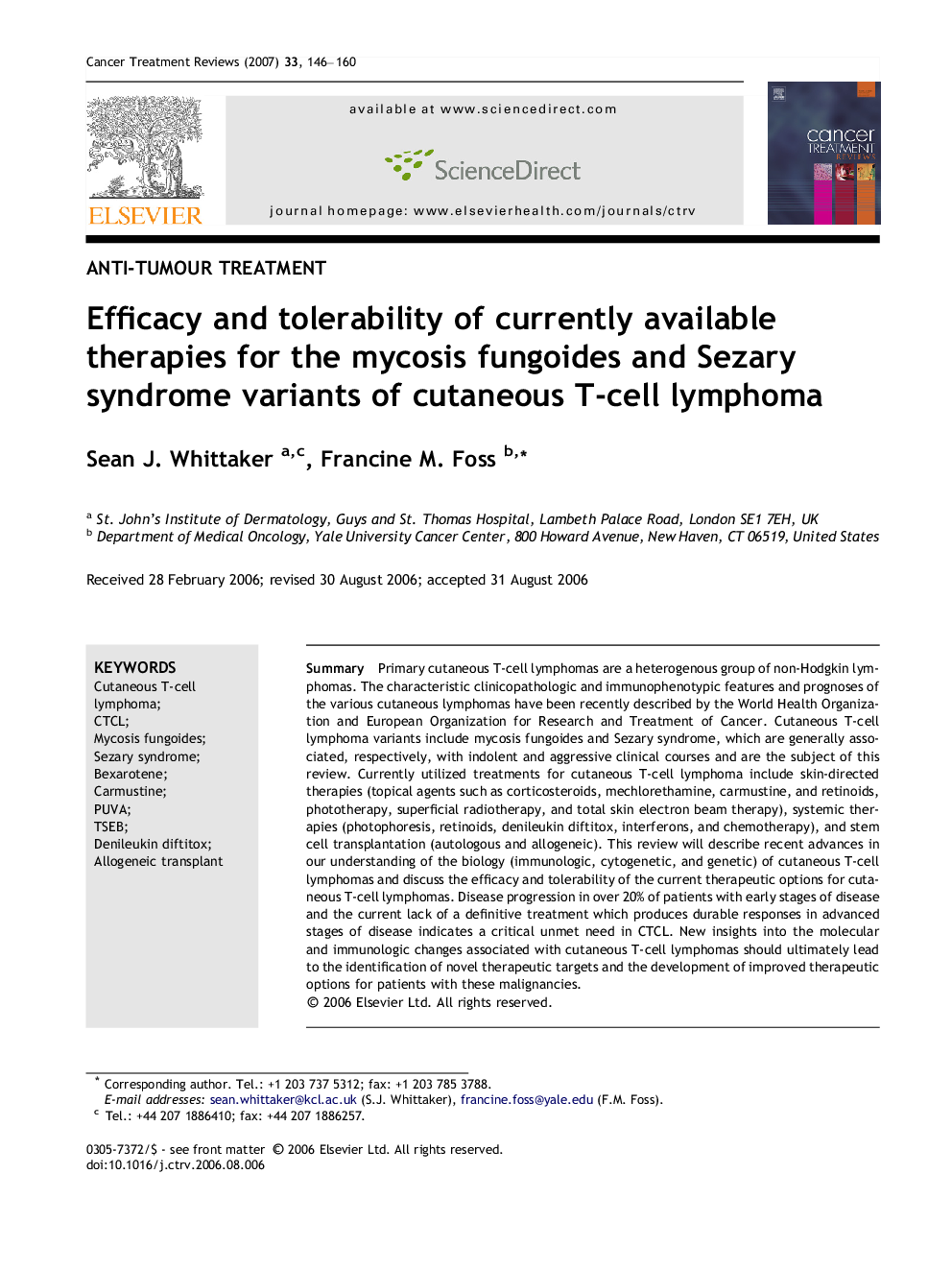| Article ID | Journal | Published Year | Pages | File Type |
|---|---|---|---|---|
| 3980710 | Cancer Treatment Reviews | 2007 | 15 Pages |
SummaryPrimary cutaneous T-cell lymphomas are a heterogenous group of non-Hodgkin lymphomas. The characteristic clinicopathologic and immunophenotypic features and prognoses of the various cutaneous lymphomas have been recently described by the World Health Organization and European Organization for Research and Treatment of Cancer. Cutaneous T-cell lymphoma variants include mycosis fungoides and Sezary syndrome, which are generally associated, respectively, with indolent and aggressive clinical courses and are the subject of this review. Currently utilized treatments for cutaneous T-cell lymphoma include skin-directed therapies (topical agents such as corticosteroids, mechlorethamine, carmustine, and retinoids, phototherapy, superficial radiotherapy, and total skin electron beam therapy), systemic therapies (photophoresis, retinoids, denileukin diftitox, interferons, and chemotherapy), and stem cell transplantation (autologous and allogeneic). This review will describe recent advances in our understanding of the biology (immunologic, cytogenetic, and genetic) of cutaneous T-cell lymphomas and discuss the efficacy and tolerability of the current therapeutic options for cutaneous T-cell lymphomas. Disease progression in over 20% of patients with early stages of disease and the current lack of a definitive treatment which produces durable responses in advanced stages of disease indicates a critical unmet need in CTCL. New insights into the molecular and immunologic changes associated with cutaneous T-cell lymphomas should ultimately lead to the identification of novel therapeutic targets and the development of improved therapeutic options for patients with these malignancies.
